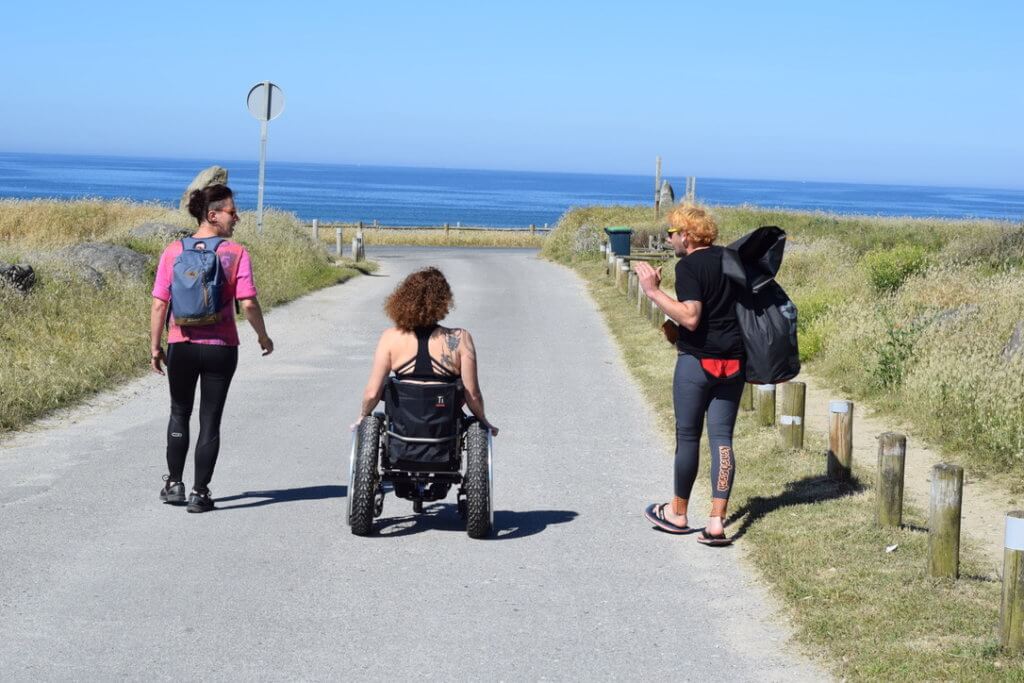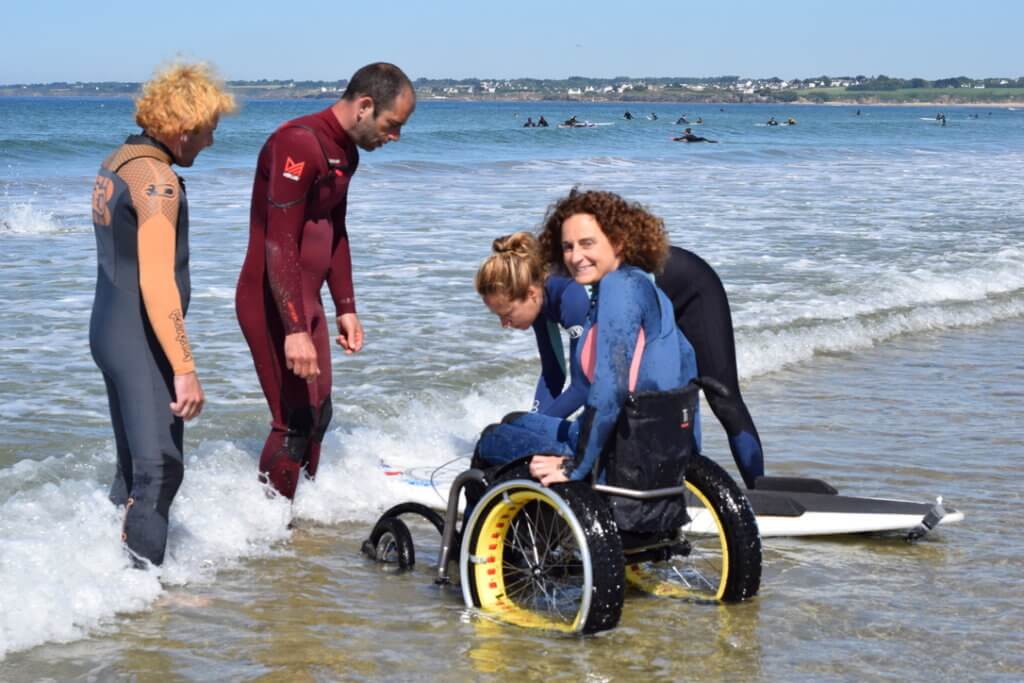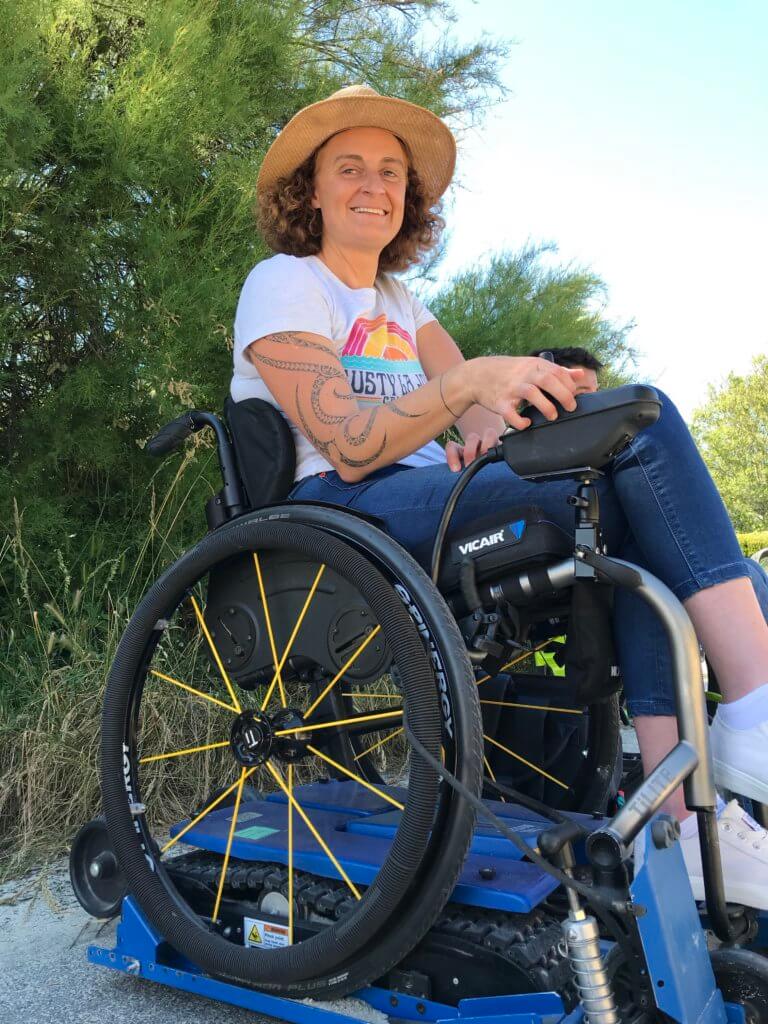June 14, 2020
For wheelchair users, the stumbling block of surfing is indeed access to the waves.
Difficult to get rid of at least one caregiver (valid or disabled), nevertheless we can think in advance about the most adequate means.
I have tested a few which I will compare, this is not exhaustive, indeed the technical means of compensating for disability have experienced a rapid growth in recent years!
There are several criteria to take into account that will depend:
• From the spot, therefore from the environment: sand, stones, hold, boat, jet ski …
• Means on site: some beaches are equipped in particular with seahorse armchairs or “tiralos”.
• Human resources: alone, in pairs with a team?
• Finance: this equipment can be expensive, sometimes reimbursed in part in France, for this it will also be necessary to be interested in subsidies or rights relating to the situation of disability.
• From the vehicle: if you have to transport the equipment, in addition to the wheelchair and the boards, you are quickly limited.
• Local travel? national? international ? in the latter case it will be a question of taking into account the air transport then the rental of the vehicle on the spot.
• The autonomy linked to the handicap in itself but also to the habit of using the material.
My tests are therefore also dependent on these criteria, sometimes it is not perfect but we do with what we have!
Seahorse chair




The seahorse chair is specifically manufactured to roll on paths, sand and be submerged, You can find over here certain beaches which are directly equipped and it can also be bought by an individual.
It is interesting to note that it has an LPPR (We get here in France a “List of Refundable Products and Services” for disable people) which makes it eligible for a partial reimbursement of social and mutual security like any wheelchair (it can be combined with the purchase of a daily life chair), its cost is 2990 euros.
The seahorse chair is made to be transported in a car trunk, it can be disassembled into 4 elements: the seat, the push bar and the 2 wheels.
Its design facilitates transfers from the wheelchair to the seahorse (and sometimes the reverse), it can be pushed on flat ground by the user alone.
For the beach it is imperative to have a caregiver, knowing that the user can carry his board on his knees, which avoids unnecessary back and forth.
Seahorse / board transfers are simple. Personally my technique is to go in reverse with the sea horse, the board’ nose towards the sea and I rock on the side to find myself in place on my board.
The disadvantages: it takes up space in the trunk, it takes a third party on arrival to assemble and in return, to disassemble it, it is difficult for a traveling by plane. And it obviously takes up storage space at home.
“Tiralo”
This chair is not a launching chair to the water, it is rather made for bathing while staying in it. But sometimes it’s the only device available on the beach.
Transfers require the help of 1 or 2 people. No autonomy possible for the user once installed into the chair. Transfer to the board is difficult because its large inflated wheels float on the water.
Impossible to transport, it is typically an armchair made available in the summer by the cities, but they have the merit of being there when you have nothing else!
FAT wheels




An interesting alternative to launching chairs: equip your own chair with wheels suitable for the beach. Easy to put on and take off.
The FAT wheels are very wide, you can push directly on the tires (the handrails have no interest). The user is active because it propels itself alone to the sand.
No excessive handling, so it’s quick.
The cost is not unbearable: 325 euros per pair fitted (can even be integrated as a type of wheels when ordering a new wheelchair), it is easy to transport and store at home.
On the beach, unless you have hard sand, a caregiver is required.
For my part the only drawback that I found them: it is that they do not pass in width on the lifting platform of my van, so I have to put them in place when I arrive at the parking lot.
I use it with or without an associated Freewheel (the freewheel is very fragile, hates sand, water, salt … so be careful with maintenance!)

It is not recommended to immerse a chair, especially for bearings. You can either dedicate an old armchair for this activity, making sure to rinse well and maintain the equipment on each outing, or else to transfer to the sand and crawl to the water, which is not that complicated. Certain bearings are impervious to sand and humidity, prefer them when doing annual maintenance.
The Freedom Trax


A priori, the Freedom Trax tracker was not at all designed for this use! It is not submersible even if it supports snow and puddles.
Nevertheless it is the only mobility material, which allows the user to be completely autonomous from his vehicle at the spot, sand included!
Just one person to carry his board and reassemble the caterpillar on the beach after the transfer.
Helped return transfer is required, because suddenly it is impossible to return to your chair because of the height.
Its price, however, is substantial: 7,400 euros including tax, to be reserved for riders, who live opposite the spot and practice several times a week. It is noted that some municipalities are starting to equip themselves!
The other devices:
I was able to test other means of launching in the United States and England, but they all required that the user be carried to install it and get it out of the chair, no autonomy possible on all manipulations.
Article written by Katell
